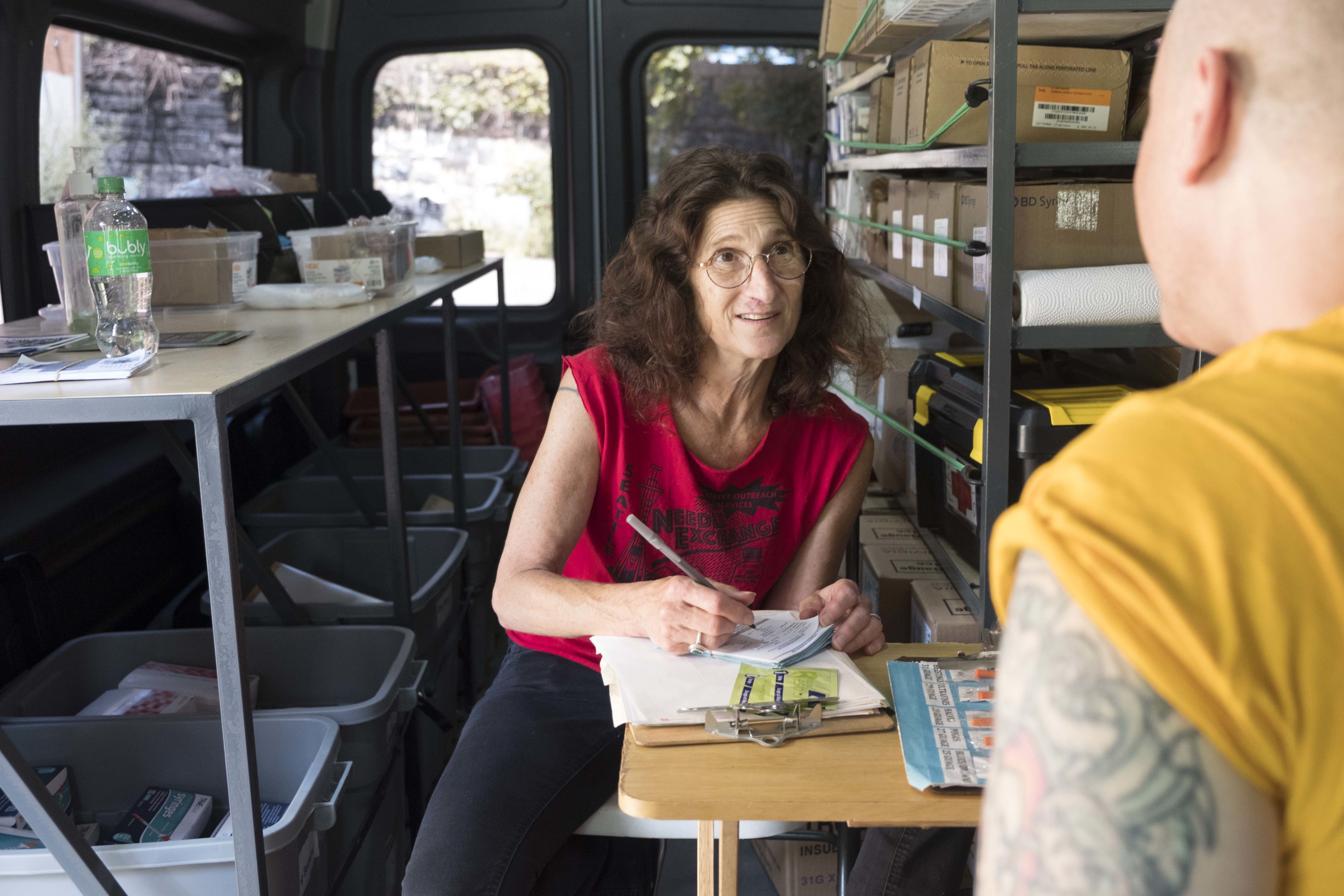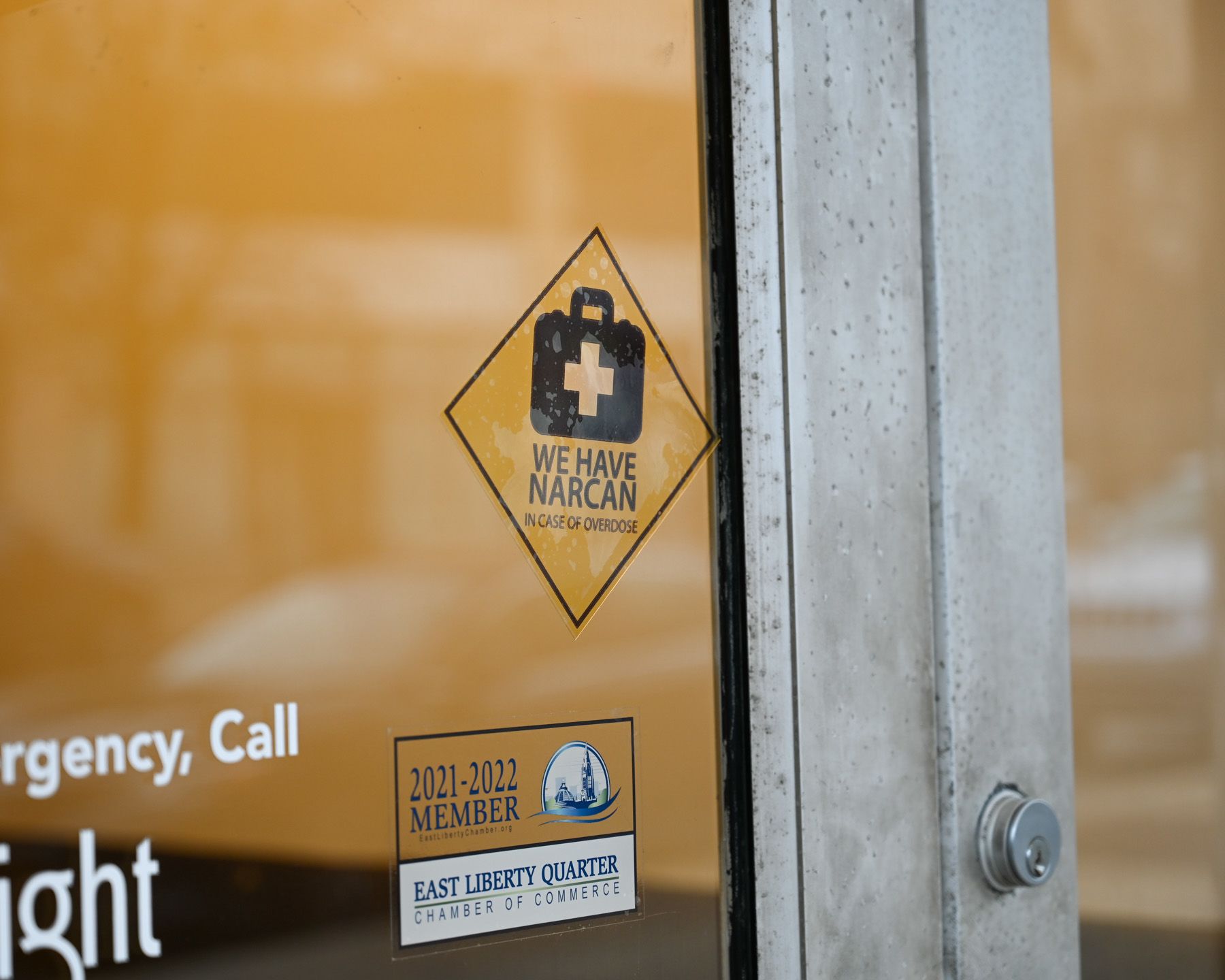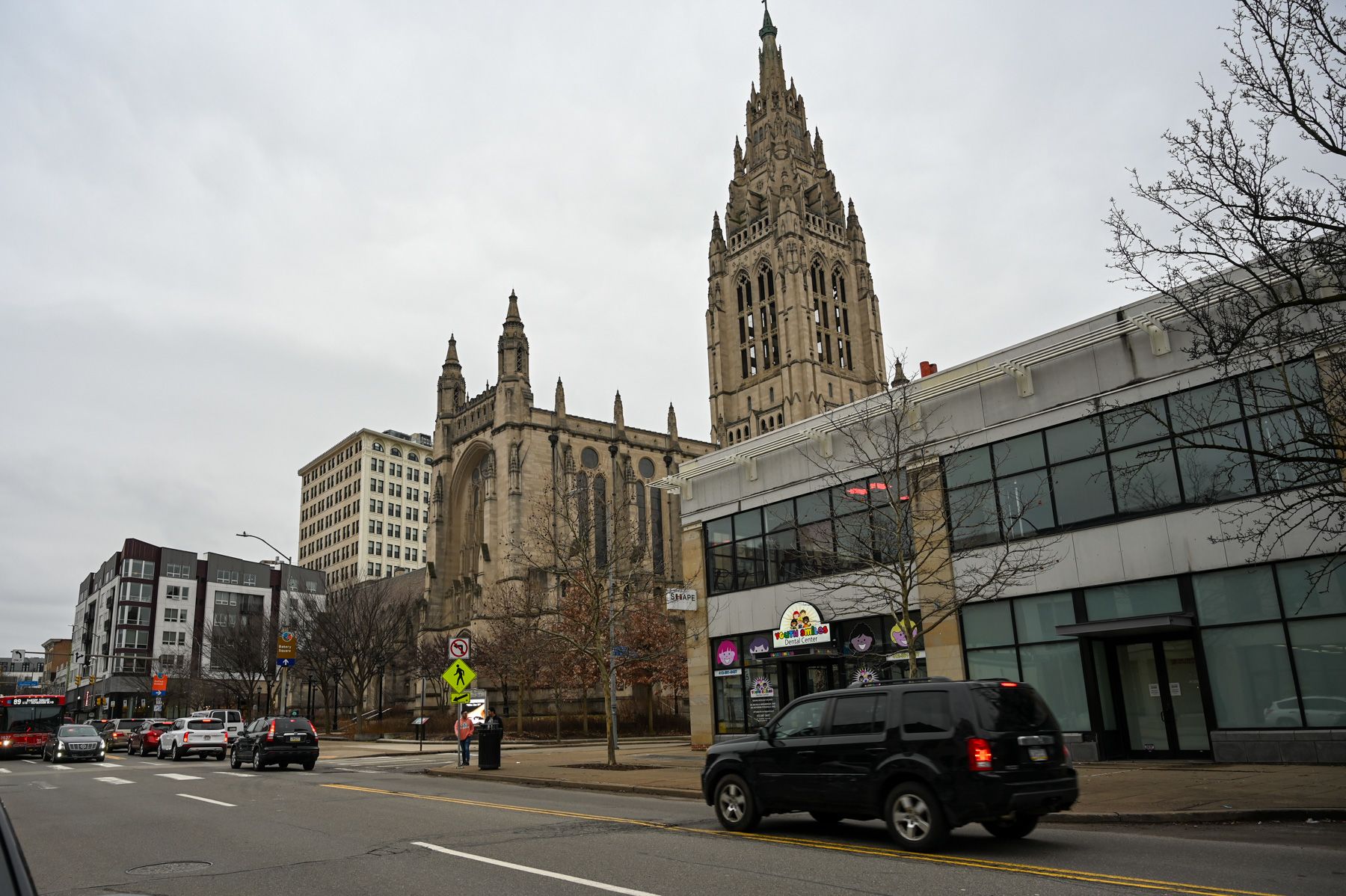The 'Desensitized' State
Pennsylvania harm reduction organizations find solutions are ‘not one-size-fits-all’

STATE COLLEGE, Pa. — In Pennsylvania – where one person died of an overdose every two hours in 2022 – the search for solutions to the drug crisis is complicated.
State policymakers and advocates have been successful, to some extent, with making overdose reversal remedies, such as naloxone, more available and have worked to provide training to administer it. Community organizations in the state have expanded syringe services, such as needle exchanges, even at the risk of potential legal challenges.
Compared to Scotland, the drug crisis hit Pennsylvania more severely. But reporting by Penn State’s journalism team found that, in Glasgow, Pittsburgh’s sister city, community groups are at the center of trying to stem the tide of the epidemic. The country has tested and implemented more radical solutions, like drug consumption rooms. Organizations have worked to build an infrastructure that provides women with resources and support, and prominent focus is directed at decriminalization work with its government.
In Pennsylvania, early reports for 2023 list opioids as the leading drug that caused death followed closely by fentanyl.
“It is extremely toxic,” Carla Sofronski, executive director of Pennsylvania Harm Reduction Network (PAHRN), said about the state’s drug supply. “It’s poisonous.”
With the rate of drug use across Pennsylvania steadily rising, the state continues to look for solutions.
Organizations like PAHRN focus on harm reduction tactics, potentially life-saving services for people who use drugs without requiring those people to abstain. When that approach is used throughout the world, it often sparks a backlash that failing to get people off drugs is simply failing. But Sofronoski said people use harm reduction methods every day, like wearing seat belts in the car.
“We can either minimize infectious disease rates and death in Pennsylvania, or we just stand there and watch while people die,” she said. “We’re tired of watching people die.”
PAHRN trains different organizations — family groups, justice groups, advocates for people who use drugs — to educate and expand access to harm reduction methods.
According to Sofronoski, the training sessions aim to “meet people where they are” with their knowledge of harm reduction.
“We need to open our minds past the stigma and really think about, ‘What does one need?’ which is not a one-size-fits-all answer,” she said.
If Pennsylvania leaders do not explore other ways to tackle the drug crisis, Sofronoski said the situation will only get worse.

"All of these things that we're doing aren't showing the outcomes that we're told they're supposed to."
- Katie Houston, Prevention Point Pittsburgh -
The legality of harm reduction programs
As PAHRN works for change through collaboration and advocacy, other services provide support and sterile supplies to people who use drugs.
Prevention Point Pittsburgh (PPP), a nonprofit organization focused on harm reduction methods, provides people who use drugs with smoking, snorting and injection supplies while helping connect them with other food, shelter and medical services.
Katie Houston, the administrative coordinator, said it took seven years from PPP’s founding in 1995 for the organization to gain county approval. Skeptics argued that harm reduction encourages illegal use of drugs.
However, Houston said stopping drug use is an “unattainable goal,” citing its history dating to the earliest times.
Houston mentioned how Pittsburgh is home to Mister Rogers’ real-life neighborhood and compared harm reduction to the concept of “Won’t You Be My Neighbor?”
If the state continues to criminalize people who use drugs, Houston said the drug atmosphere will just become more “unsafe.”
“As long as human beings exist on this Earth criminalizing drugs — which is really criminalizing people who use drugs — trying to get rid of drug supplies, its history has shown us that that doesn't decrease drug use,” Houston said. “All of these things that we’re doing aren’t showing the outcomes that we’re told they’re supposed to.”
Pennsylvania’s stance on the decriminalization of drugs is mixed. While marijuana is legal for medical reasons, the commonwealth has not joined with almost half the states in approving marijuana for recreational use.
Since 1972, Pennsylvania has followed the “Controlled Substance, Drug, Device, and Cosmetic Act” — or as Houston calls it, the Drug Paraphernalia Act. In addition to criminalizing drugs themselves, the act included any equipment or materials used to inject, grow and test substances.
According to Houston, the act is the reason why syringe-services are illegal in the eyes of the state.
However, in 2022, former Pennsylvania Gov. Tom Wolf signed off on a modification to the law.
“This definition does not include testing products utilized in determining whether a controlled substance contains chemicals, toxic substances or hazardous compounds in quantities which can cause physical harm or death,” the act now says. “The term ‘testing products’ shall include, but is not limited to, fentanyl test strips.”
Houston said the language is crucial in a state where the drug environment is constantly changing.
“Thankfully they did make it more expansive to not just fentanyl test strips,” Houston said, “because this year, we've seen the emergence of xylazine into our drug supply.”
Xylazine, known by its street names “tranq,” “tranq dope” and “zombie drug,” is an animal tranquilizer that is now being used with drugs like heroin and fentanyl. According to the Pennsylvania Department of Health, xylazine contributed to over 640 deaths in Pennsylvania in 2022 — a 1000% increase since 2018.
In April 2023, Gov. Josh Shapiro, a Democrat, announced that his administration would take action to limit access to xylazine. According to its release, Secretary of Health Dr. Debra Bogen said the state’s focus remains on harm reduction strategies, but at the same time, they “need to take action to protect people from xylazine.”
Because of the language change in the Drug Paraphernalia Act, organizations like PPP provide people who use drugs with xylazine testing strips to help decrease the harms of xylazine.
On the eastern side of the state, Safehouse Philly acts as a nonprofit corporation with a mission to advocate for overdose prevention services to the community, including a drug consumption room in Philadelphia.
Co-founder and legal team member Ronda Goldfein said the corporation planned on opening in February 2020, however, the organization encountered community and legal backlash.
The United States is suing the nonprofit to “stop (Safehouse) from committing a federal crime and exacerbating drug-related damage in Philadelphia.”
“Community members have suffered the consequences of their neighborhoods’ infestation with crime and drugs,” according to a motion filed last April.
As Safehouse continues its court fights to argue legality of the overdose prevention services, Goldfein said they’re continuing to gather support.
Though community members were initially upset with the location and feared the services would bring drugs into their neighborhood, Goldfein said she urged them to “look around.”
“There are drugs in your neighborhood,” she said. “There are overdoses on your sidewalks.”
Conversations are key, she said, as they allow for an explanation as to why telling people to stop using drugs won’t work.
“We try to explain that people are stuck. This is not a moral failure,” Goldfein said. “People are stuck and they need some assistance to get unstuck.”

Advocating for policy change in Pennsylvania
Despite Pennsylvania’s alarming drug use statistics, Sofronoski said there are ways to deal with the drug crisis directly.
She emphasized the need to change the criminalization of substance use and to understand that people will never stop using drugs. The policies should be built from conversations with people who used drugs within the past year, she said. People who have been in recovery for longer see their solution as the only one that works.
PAHRN’s Sofronski hopes that her group can make a difference – by offering access to the anti-overdose drug naloxone, by fighting governmental stigma of drug users, through education and by working to improve access to treatment.
“We have become, in this state, so desensitized to drug use that our numbers continue to climb,” she said.
Safehouse hopes to open an overdose prevention site following OnPoint NYC — the first drug consumption room in the U.S. that provides individuals with a safe environment to inject substances.
After opening in 2021, the center now serves over 4,000 participants and has intervened in more than 1,300 overdoses.
“OnPoint keeps people off the sidewalks,” Goldfein said. “OnPoint cleans up. OnPoint makes sure that everyone is inside. OnPoint gives neighbors turkeys on Thanksgiving — they want to be good neighbors.”
Being “a good neighbor” to Goldfein consists of keeping people who use drugs from injecting and overdosing on the streets.
To her, that’s a win.

One of Prevention Point Pittsburgh's location is on Penn Avenue in East Liberty. Photo by Mila Sanina
One of Prevention Point Pittsburgh's location is on Penn Avenue in East Liberty. Photo by Mila Sanina